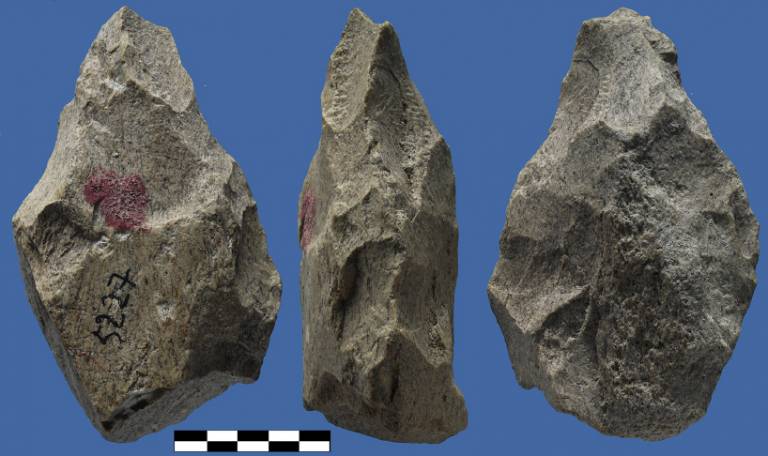Revisiting prehistoric use of bone as tools
26 May 2016
In this study, we examine Lower Paleolithic archaeological assemblages that contain bifaces (handaxes) made of elephant bones from Africa, Europe, and the Levant.
 The aims of this paper are to summarize the available evidence of elephant bone tools manufacturing in the Acheulian, and to analyze patterns of elephant bone tool industry compared to stone tool industries and other taxa bone industries. We will focus on the association between stone and elephant bone bifaces at several Acheulian sites, and will present a new perspective on the connections between bifaces made of the two materials at these sites. Based on the long-term interaction between humans and elephants in Paleolithic times, the human dependence on elephant meat and fat for survival, and many lines of resemblance between elephants and humans, we propose that Lower Paleolithic elephant bone bifaces were not manufactured solely for functional purposes, and suggest that there were some cosmological, cultural and symbolic properties reflected in the production of Acheulian bifaces from elephant bones.
The aims of this paper are to summarize the available evidence of elephant bone tools manufacturing in the Acheulian, and to analyze patterns of elephant bone tool industry compared to stone tool industries and other taxa bone industries. We will focus on the association between stone and elephant bone bifaces at several Acheulian sites, and will present a new perspective on the connections between bifaces made of the two materials at these sites. Based on the long-term interaction between humans and elephants in Paleolithic times, the human dependence on elephant meat and fat for survival, and many lines of resemblance between elephants and humans, we propose that Lower Paleolithic elephant bone bifaces were not manufactured solely for functional purposes, and suggest that there were some cosmological, cultural and symbolic properties reflected in the production of Acheulian bifaces from elephant bones.
The use of elephant bones for making Acheulian handaxes: A fresh look at old bones
Katia Zutovski & Ran Barkai
DOI:10.1016/j.quaint.2015.01.033
 Close
Close

